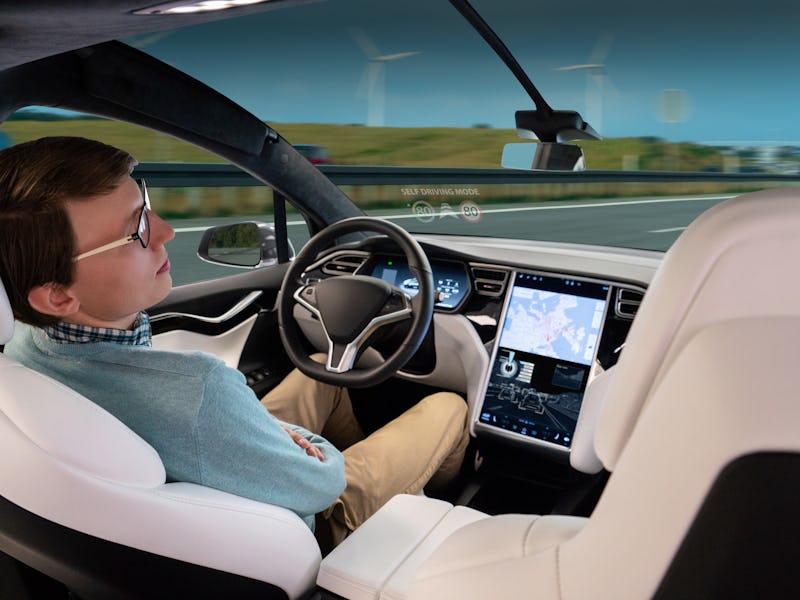Tesla Autopilot: Why the NHTSA is investigating the semi-autonomous feature
The U.S. National Highway Traffic Safety Administration is investigating Tesla's semi-autonomous Autopilot driving system.

Autopilot, Tesla’s semi-autonomous driving system, is coming under scrutiny.
On Monday, the Wall Street Journal reported that the U.S. National Highway Traffic Safety Administration opened an investigation into 11 Tesla crashes where Autopilot was engaged. Tesla claims on its website that the feature’s “advanced safety and convenience features are designed to assist you with the most burdensome parts of driving.”
Want to find out more about the latest in the world of Tesla? Subscribe to MUSK READS+ for exclusive interviews and analysis about all things Musk.
It’s the latest in a series of questions around Tesla’s feature, which the company says is not meant to operate without human oversight. The NHTSA will investigate how the feature monitors and enforces that human guidance.
It comes as Tesla looks to expand on the feature by taking over more driving tasks as the software develops. On Thursday, Tesla will host an A.I. day that will likely outline its progress on its “full self-driving” feature — which, despite the name, also cannot currently operate without human oversight.
Tesla Autopilot: what is it?
Tesla designed the Autopilot to drive the car in a limited set of circumstances with human oversight.
- It can steer, accelerate, and brake along roads.
- It can drive itself to its owner’s position within a parking lot.
- It can turn off a highway at the correct exit based on inputted destination.
The feature does not drive the car unaided. In July 2020, a German court banned the company from using statements like “full potential for autonomous driving” and “Autopilot inclusive.” It claimed these terms were misleading.
In response, CEO Elon Musk posted on Twitter:
“Tesla Autopilot was literally named after the term used in aviation. Also, what about Autobahn!?”
Reports of an Autopilot system emerged in 2013. The feature first debuted on cars demonstrated in 2014. The company MobilEye designed a system deployed in initial versions of the feature.
Tesla made a controversial switch to its own in-house system in 2016, intending to offer full self-driving eventually.
In October 2020, Tesla started rolling out a beta version of its “full self-driving” software. Vehicles with the Tesla in-house system are eligible to buy the upgrade, enabling cars to drive from A to B under supervision.
Tesla Autopilot: how does it work?
The system uses eight surrounding cameras able to see up to 250 meters (820 feet) away. It also packs 12 ultrasonic sensors that can detect objects up to eight meters (26 feet) away.
A built-in computer uses the input to make decisions about how the car should move. Over-the-air software updates improve these decisions over time.
The car uses sensors in the steering wheel to measure whether a person is still holding the wheel during Autopilot. In May 2021, Tesla activated the in-car camera in Model 3 and Y cars to monitor the driver.
Tesla Autopilot: what is the NHTSA investigating?
The agency is investigating Tesla Model S, 3, X, and Y vehicles from 2014 to 2021. This covers an estimated 765,000 cars.
The agency will investigate 11 crashes, seven injury incidents that caused 17 injuries, and one fatality.
Those 11 crashes are:
- January 22, 2018, in Culver City, California.
- May 29, 2018, in Laguna Beach, California.
- December 10, 2019, in Norwalk, Connecticut.
- December 29, 2019, in Cloverdale, Illinois.
- January 22, 2020, in West Bridgewater, Massachusetts.
- July 30, 2020, in Cochise County, Arizona.
- August 26, 2020, in Charlotte, North Carolina.
- February 27, 2021, in Montgomery County, Texas.
- March 17, 2021, in Lansing, Missouri.
- May 19, 2021, in Miami, Florida.
- July 10, 2021, in San Diego, California.
The investigation will look at the technologies used to “monitor, assist, and enforce the driver's engagement” and perform an “examination of the contributing circumstances for the confirmed crashes [...] and other similar crashes.” The agency will also look at the system’s object and event detection and response.
In short:
- How well does Autopilot monitor drivers?
- How well does it respond to the world around it?
This question is likely to come to the forefront as Tesla prepares to roll out its full self-driving features to a wider audience. With Musk set to outline advancements at an event on Thursday, the investigation will likely hang over the event’s media coverage.
SUBSCRIBE TO MUSK READS+, A PREMIUM NEWSLETTER THAT COVERS THE WORLDS OF ELON MUSK, SPACEX, TESLA, AND EVERYTHING BETWEEN.
This article was originally published on